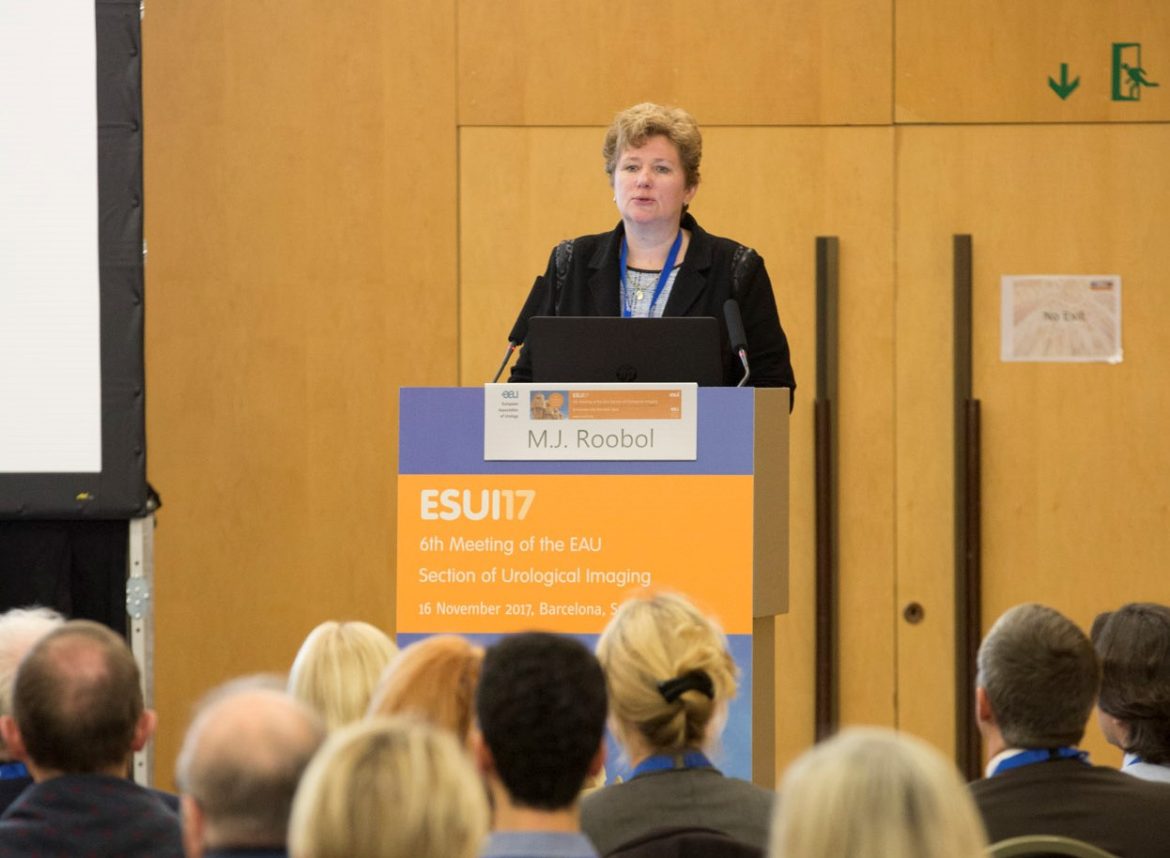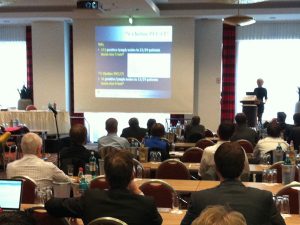Is magnetic resonance imaging (MRI) before primary biopsy cost-effective? Does imaging have potential to further improve diagnostics? Is there a need to analyse MRI cost-effectiveness? These are some of the topics discussed today during the EAU Section of Urological Imaging (ESUI) session “Improving the effectiveness in diagnosis of prostate cancer – Part 1” moderated by Prof. A. Villers (FR) and Prof. T. Loch (DE).
The 6th Annual ESUI Meeting opened today in Barcelona and presented several sessions on the impact of MRI technology on the diagnostics of urological cancers.
Debate on cost-effectiveness: MRI before primary biopsy
In the “Point and counterpoint in prostate cancer diagnosis 2.0: MRI before primary biopsy: Let’s break the bank with the costs”, Prof. N. Mottet (FR) contended that MRI before primary biopsy is not cost-effective. “The quality of the radiologist is the main issue.” He pointed out a Guidelines recommendation (LE 3, GR 3) regarding baseline biopsy, imaging is merely an option.
Prof. H.U. Ahmed (GB) said that MRI pre-biopsy is indeed cost- and clinically effective. He stated that MRI pre-biopsy reduces the number of biopsies, reduces numbers of insignificant cancers found, and improves detection of significant cancers. He noted: “In the PROTECT study, 25% of men would never go for another biopsy.”
During the discussions, audience members shared their perspectives. A participant said: “Is there a patient-reported outcomes data in PROMIS? In my experience, if patients know the evidence in PROMIS, they will not want to have a systematic biopsy anymore.” He said patients will drive the decision and that MRI will “…become the standard.”
Imaging versus biomarkers
“The use of new biomarkers and/or risk calculators will improve prostate cancer diagnostics versus current clinical practice,” said Prof. T. Nordström (SE) in his lecture “What is more effective to select patients for prostate biopsy: Imaging vs. biomarkers”. He added: “Imaging has great potential to further improve diagnostics. Both new biomarkers, as well as, improved imaging add value independently.”
He stated two strategies for improvement: improved selection of men for work-up and improved tumor identification. In detecting prostate cancer, he mentioned four strategies: Traditional, Biomarker, Targeted Biopsy and Combined.
False Negative rate
“There is no number one answer,” said Prof. C. Roobol (NL) with regard to the acceptable False Negative (FN) rate. She stated that an FN test does not mean missing the window of cure. She advises to “risk stratify before (repeating the) MRI. “Risk stratification is key,” said Roobol.
She also mentioned the conclusion of a systematic review of Multiparametric MRI (mpMRI). “Before we consider mpMRI, we should pre-evaluate the risk of clinically significant prostate cancers in patients. Depending on the risks, we assess whether to obviate biopsies or not.”
She concluded her lecture “What is an acceptable false negative rate in the detection of prostate cancer?” with the message: “The nirvana of a 0% FN rate will result in > False Positive rate,” and reiterated the significance of risk stratification as this “could prevent a lot of men from (further) unnecessary testing and (immediate) re-testing.”
Quality issues of mpMRI
In his lecture “Quality issues of mp-MRI: The problem of re-do MRI and cost-effectiveness”, Prof. J. Walz (FR) said “Due to lack of quality, the need for a repeat MRI is not yet integrated in our current analyses on cost-effectiveness. However, it will have an influence on the results, either through increased costs or through lower sensitivity.”
He added: “Before we can draw clear conclusions for the general population, we need realistic cost-effectiveness analysis that do take into account what is currently available in the general population.”





